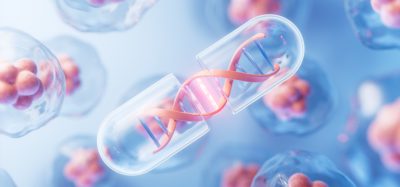Key modifier identified in genetic deletion related to autism
Posted: 18 February 2020 | Rachael Harper (Drug Target Review) | No comments yet
A key modifier has been identified by researchers in a large fruit fly genetic deletion related to neurodevelopmental disorders such as schizophrenia and autism.


In a new study, researchers from Penn State, Boston University and the University of Florida, all US have identified a key modifier in a large genetic deletion related to neurodevelopmental disorders.
The study evaluated the effects of over 300 pairwise knockdowns (reducing the expression of two genes simultaneously) of the fruit fly versions of genes located in a region of human chromosome 3 that, when deleted, has been implicated in these disorders. These interactions suggest that the disorders have complex causation involving many genes, rather than resulting from the effects of any individual gene.
One gene in particular, NCBP2, appears to be a key modifier, influencing the impact of other genes in the deletion, the scientists said.
“Neurodevelopmental disorders, like schizophrenia and autism, are often associated with large genetic deletions or duplications,” said Santhosh Girirajan, Associate Professor of Genomics in the Biochemistry and Molecular Biology and Anthropology departments at Penn State and the leader of the research team. “These ‘copy-number variants’ can contain many genes, so piecing together the molecular mechanisms that lead to these disorders is incredibly difficult. The deletion on human chromosome 3, referred to as 3q29, encompasses 1.6 million base pairs and includes 21 genes.”
Piecing together the molecular mechanisms that lead to these disorders is incredibly difficult”
Of the 21 genes located in the 3q29 deletion, fruit fly counterparts have been identified for 14 genes. Using a technique called RNA interference (RNAi), which reduces the expression of genes in specific tissues in the fly, the researchers first knocked down the expression of 14 fly genes individually and quantified their impact on how cells are organised in the fly eye. They then looked at pairwise knockdowns by reducing the expression of two genes simultaneously.
“When we look at pairwise knockdowns, there are basically three possible outcomes,” said Matthew Jensen, a graduate student at Penn State and co-first author of the paper. “The effect could be additive, meaning the impact we see in the pairwise knockdown is simply what we would see by adding the effects of the two individual genes together. This would suggest that the genes act independently of one another.
“Alternatively, we could see a rescue of the impact of the individual gene, or we could see the impact get worse. These last two outcomes represent an interaction between the genes, where the whole is greater than the sum of its parts and suggest a more complex relationship between the genes.”
Among all the pairwise knockdowns the team tested, one particular gene stood out as having a large effect on the impact of all the other genes in the 3q29 deletion. The NCBP2 gene codes for a protein that is part of the ‘nuclear cap-binding complex’, which binds to the end of RNA molecules and plays a role in RNA regulation, transport and decay in the cell. The main impact of NCBP2 interactions was the disruption of the cell cycle and increased apoptosis (cell death). The researchers propose that NCBP2 could modify several cellular processes, not necessarily directly related to apoptosis, but ultimately causing a cascade of events that lead to cell death. Thus, the researchers suggest that apoptosis is an important molecular mechanism for neurodevelopmental disorders related to the 3q29 deletion.
The study was published in PLOS Genetics.
Related topics
Cell Cultures, Gene Testing, Genetic Analysis, Genomics, RNAs
Related conditions
Autism, Neurodevelopment, Schizophrenia
Related organisations
Boston University, Florida University, Penn State
Related people
Matthew Jensen, Santhosh Girirajan








